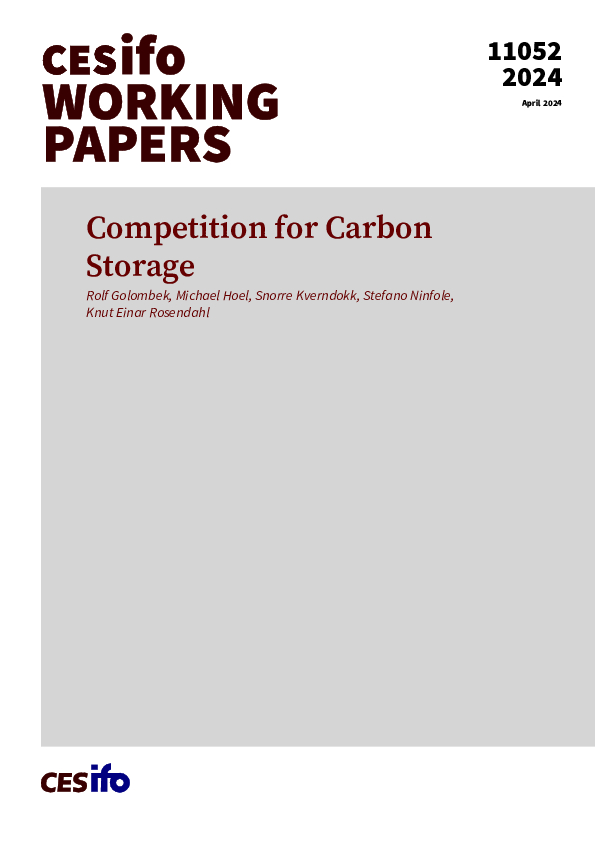Competition for Carbon Storage
CESifo, Munich, 2024
CESifo Working Paper No. 11052

It is widely recognized that a cost-efficient way to achieve the climate targets of the Paris agreement requires investment in carbon capture and storage (CCS). However, to trigger sizeable investment in CCS the carbon price must exceed the historic carbon prices. This paper examines whether a higher price of carbon enhances competition of storage services and thus leads to lower costs of CCS. Using a Hotellling model with two storage sites, each being located at each end of the Hotelling line, we show that there are three alternative competition regimes. The level of the carbon tax determines which regime materializes. For “low” carbon taxes, there is no competition between the two storage firms. For “high” carbon taxes, there is standard Bertrand competition between the two storage firms. Finally, for “intermediate” carbon taxes, there is so called partial competition with multiple equilibria. Contrary to the standard conclusion on competition, we find that when each storage site is imposed to charge the same price for all its clients, the price under monopoly is lower than under partial competition. We offer several extensions of the model as well as numerical illustrations. With our reference parameter values and a carbon tax sufficiently high to reach the Paris targets, we find that we may end in a partial competition regime.
Energy and Climate Economics
Industrial Organisation